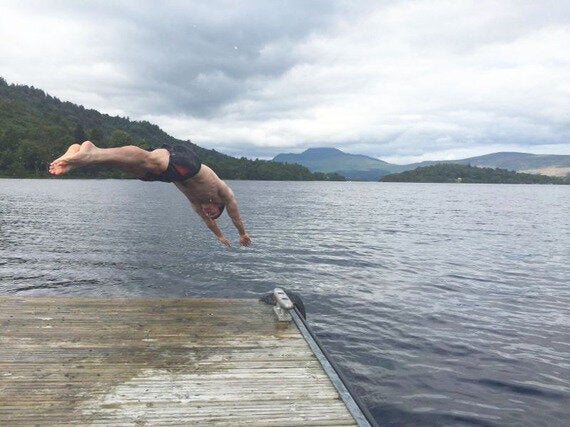There is perhaps no better way to vent your post-election stress than to explore the abundant lakes, rivers and waterfalls that fall within our newly elected constituencies. Over the last 15 years, legislation has made the UK a more welcoming place to naturists, at a time when swimming in the wild has risen in popularity for its health and social benefits.

In 1999, Roger Deakin published Waterlog, an immersive account of his journey through Britain's inland and coastal waters. The itinerant Deakin sinks the reader beneath the liquid surfaces of the country, composing an argument to support our rightful place in natural waterways. Challenging any health and safety regulations while dipping unobserved becomes Deakin's protocol, a viewpoint that has been inherited by a new wave of wild swimmers.
Since the Second World War, swimming in the rivers, lakes and waterfalls of the country has suffered from the overuse of pesticides and fertilisers in farming, chemicals that gradually found their way beneath the water table. Very soon a purity that inspired the imaginations of the likes of Rupert Brooke and Virginia Woolf had became tarnished by an intensive development of the British countryside.
Aware of the rising problem, Westminster eventually passed the Control of Pollution Act in 1974 to put in place parameters to reduce the amount of poisonous effluent entering streams. This legislation was updated in 1991 by the Water Resources Act to control sensitive water zones, beginning a period of revival for Britain's natural waterways.
Today, the National Trust and Environment Agency are actively behind wild swimming. The National Trust have even gone as far as to include wild swimming as one of the 50 things to do before you're 11 ¾ . The colourful list also includes priorities to skim a stone, catch a fish with a net and eat an apple directly from a tree.
If you're already well beyond your 12th birthday and haven't yet made the plunge, fear not, plenty of adults are out there doing it. In Scotland, inland waters are open for business, so long as you obey the Outdoor Access Code. In England and Wales an extensive 'right to roam' has been in place since the Countryside and Rights of Way Act (2000), supported in particular by National Parks, the Forestry Commission, Wildlife Trust and National Trust.
As for logistics, Daniel Start's Wild Swimming couldn't be a better guide. The book provides a fountain of knowledge on the activity, including the location of 300 prime spots across England, Wales and Scotland. It also organises lists of waterways that are best for padding, for literary swims, for skinny-dipping and those that are most accessible by train, or for a picnic. As for water quality - this is regularly monitored by the Environment Agency, and is updated in a map.
Some advocates for wild swimming have gone further than merely using the water for recreation. An import from the States, activist feature-length documentary DamNation has prompted a greater interest in dam removal, the reopening of rivers for wildlife and the importance of waterways for human recreation. With the film's backer, Patagonia, now bolstering its stake in European environmental affairs with a raft of new hires, we'll no doubt see similar activities in waterways near to where we swim.
If radical dam-busting activity isn't enough cause to celebrate the skinny-dipper leaping within you, also note that swimming regularly in cold water has been shown to have health benefits in reducing blood pressure and cholesterol while inhibiting blood clotting and increasing fertility.